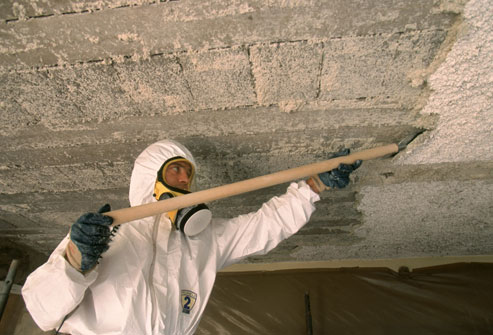7 Reasons Why Asbestos Is Bad For Your Health
 Asbestos is a naturally occurring substance with mineral properties that allow it to be morphed into a fluffy consistency. The fibers of asbestos are flexible and soft and resistant to heat.
Asbestos is a naturally occurring substance with mineral properties that allow it to be morphed into a fluffy consistency. The fibers of asbestos are flexible and soft and resistant to heat.
Pure asbestos is resistant to electricity and chemical corrosion and is a very effective insulator. It has been used in the past to make paper, plastic, cloth, cement, and various other materials to make them stronger.
Having these qualities makes asbestos very cost-effective for businesses. However, the highly toxic side effects have cost millions of people severe health problems, and sometimes over time, even death.
Use of Asbestos Today
The only form of asbestos used for commercial purposes today is chrysotile, which is used in fiber cement boards.
There are over 55 countries that have banned the use of asbestos due to health concerns. However, there are some countries that still use forms of asbestos such as Asia and Russia.
Small amounts are used within the United States, but the percentage of actual asbestos must be under one percent.
Protection from Asbestos
The Environmental Protection Agency banned the use of asbestos in 1973, and in 1989 banned most products containing the substance.
With much resistance by the Fifth Circuit Court of Appeals in 1991, this ruling was reversed. There are still chemicals that the EPA is evaluating under the Toxic Substances Control Act (TSCA).
The EPA has reported through numerous studies that these chemicals have undoubtedly led to lung cancer, asbestosis, and mesothelioma when exposed to.
Health Risks
Asbestos is harmful to people’s health for several reasons. If asbestos is not disturbed, it does not pose a health risk to individuals.
But if the material is disturbed, it is considered hazardous because it is “friable”. Friable is a term used when the asbestos can be easily crumbled and has the potential to release fibers into the air.
Spray on asbestos for insulation is extremely friable. On the other hand, surfaces such as asbestos flooring are not.
It is important to note that asbestos-containing materials do have the potential to release fibers with deterioration and damage over time.
Due to the body’s inability to break down asbestos fibers or remove them once they are lodged into body and lung tissues, disease can be imminent.
Here are some of the reasons that asbestos can be detrimental to your health if exposed:
- Buildup of scar-like tissue in lungs and in the membrane that surrounds the lungs
- Tightening of the scar-like tissue surrounding the lungs; this prevents normal contraction of lung tissue and makes breathing difficult
- Blood flow to the lungs decreases, therefore causing the heart to enlarge
- Asbestosis can occur when the above factors take place, and can be accompanied by a cough, and can lead to disability and death
- Long term lung injury can lead to Mesothelioma, a deadly form of cancer
- Lung Cancer and other types of cancer
- Pleural Disorders
There are certain individuals more at risk for developing these types of asbestos-related problems and diseases. Most occur in men in their 60’s and older and who have worked in professions with the highest asbestos exposure.
The aforementioned diseases usually have a long latency period and can take decades to develop. Occupational exposure is the number one cause of contracting disease from asbestos.
The professions known to have the highest amount of exposure to asbestos include construction, mining, heavy industrial work, shipbuilding, firefighting, asbestos product manufacturing, electricity generation, and those involved in military operations.
 There are permissible limits that are legal in the workplace when it comes to asbestos. Asbestos Testing Threshold Environmental standards or Permissible Exposure Limits, (PEL) are 0.1 fiber per cubic centimeter of air as an eight-hour time-weighted average (TWA) with and excursion limit of 1.0 asbestos fiber per cubic centimeters over a 30-minute period.
There are permissible limits that are legal in the workplace when it comes to asbestos. Asbestos Testing Threshold Environmental standards or Permissible Exposure Limits, (PEL) are 0.1 fiber per cubic centimeter of air as an eight-hour time-weighted average (TWA) with and excursion limit of 1.0 asbestos fiber per cubic centimeters over a 30-minute period.
Any employer must make sure that no employee is exposed to anything over these limits.
Occupational Safety
The Occupational Safety and Health Administration (OSHA) protects workers and enforces their rights when it comes to occupational safety.
The focus of OSHA is to make sure that those employed at jobs that pose a significant risk of exposure to harmful or potentially dangerous working conditions receive information and training about workplace hazards, how to prevent them, and OSHA standards specific to their workplace.
OSHA is also responsible for reviewing records that are related to work-related illnesses and injuries.
Under the law, if an employee believes that their workplace has serious hazards or employed personnel have not been supplied proper protective equipment to deter potential harm, injury, or disease, they have every right to contact OSHA to report these deviations and to exercise their right without fear of retaliation from their employer.
OSHA also deals with complaints if a worker has been retaliated against by an employer, but only if the employee files the complaint within 30 days of the incident.
Asbestos related disease
There are some warning signs that develop when a person is showing signs of an asbestos-related disease. One of the most common that is experienced first is shortness of breath.
The inhalation of asbestos fibers over years will cause scar tissue in the lungs, leading to asbestosis. This is often the first stage of asbestos related illness.
Another tell-tale sign that will follow is swollen fingertips. This occurs in over half of asbestosis cases. This is also called clubbing, giving the fingertips a broad, round appearance.
Extreme fatigue will often follow, mainly due to the shortness of breath, and possibly due to coughing spells as well.
Wheezing oftentimes will accompany the coughing. Wheezing will occur when inflammation is present in the lungs, and there can be a whistling sound upon deep respirations.
Persistent dry coughs can also be present. These signs are cause for concern, and may show asbestos related illness, such as mesothelioma or lung cancer.
It is imperative to see a Physician when and if these symptoms occur. Even if they are not related to asbestos exposure, they may indicate other health problems and should be evaluated at once.
And most importantly, if you believe that your business or place of work may have an asbestos risk, find an OSHCR registered consultant as soon as possible.
Category: Health




